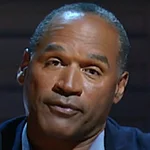 |
| Jane Genova |
The op-ed—short for “opposite the editorial page”—came into its own in 1970. That is when the New York Times editor John B. Oakes recognized that bylined commentary by non-members of the newspaper could broaden the base for discourse. Yes, that was a giant step toward the democratization of media.
Since then, the op-ed has become a standard tool in public relations. When placed in top-tier establishment publications or on influential social networks, it represents the gold standard of earned media. In addition, Mobil public relations genius Herb Schmertz added another wrinkle with the paid op-ed. Today, that is called “sponsored content.” If put together well, placed correctly and done at the right time, the impact could equal that of earned media.
However, in this era of the datafication of every aspect of human existence, the credibility and influence of opinion are in play. A sign of this is that on September 18, 2019, David Fouse headlined his Forbes article with “Is the Op-Ed Dead?”
Fouse concludes: No, the op-ed is not dead. But it is in a period of transformation. Given that the everything of everything is speeded up, those changes can be big and arrive seemingly from nowhere.
How can public relations representatives make the most of this tool, amid so much disruption? Here are seven recommendations.
Bring on the data. The mindset has to shift from the focus on rhetoric and emotion to what is standard with trial lawyers. That means hammering home the evidence—or facts. That is how the point of view should be positioned and packaged.
Being data-driven will reflect well on the client. According to McKinsey Global Institute brands associated with data are 23 times more likely to acquire customers and 19 times more likely to be profitable.
Circle back to the oldest fundamental in communications. That is, show, don’t tell. Create a theatrical-like presentation of well-constructed arguments. Those anticipate the thinking and objections of all constituencies, not just faithful followers.
Given the polarizing of media, it had been common to assume that readers share the same point of view as the author. Therefore, goes the drill, no need to trudge through the exercises of critical thinking.
Have the right people for the byline. Parachuting in a powerhouse brandname to be the voice might not necessarily help achieve your objectives. For instance, Edelman found that those in the workforce perceived commentary from their own executives as being the most credible. Designating those executives as internal columnists could increase productivity more than a guest op-ed by a professor from an elite business school. And, yes, the executives’ op-ed should be embedded with data.
Exploit the newer platforms. Sure, clients want their opinion to be in the Washington Post. However, the influence could even be greater with a video op-ed on Facebook or LinkedIn.
Of course, strategically plan to also use podcasting as a platform for opinions. Barack Obama’s podcast—“Renegade: Born in the USA”—will probably move the dial more on race relations than any of his commentary in establishment media. He partners in “Renegade” with musician Bruce Springsteen.
Also, newsletters provide the edge of addressing a clearly defined audience. For clients, this approach could even constitute a profit center. An example is the paid-subscription model of Substack.
Innovate. The highly opinionated liberal HuffPost caught fire in 2005 because it represented an innovation in mainstream media. Among the voices it attracted were those of John Kerry and Deepak Chopra. But its liberal point of view deteriorated into a rant. HuffPost wound up on the auction block.
Obviously, the lesson here is that the innovators have to keep innovating. Irreverent about the buttoned-down subject of practicing law, Abovethelaw blew up the legal media space in 2006. The bylined commentary was provocative. The guest columnists included such partners as Mark Herrmann from elite law firms. Then, as with HuffPost, rant dominated. Recent innovations have given it a fresh start. Those include data-heavy opinion pieces on Wall Street.
Include the Call to Action (CTA). That constitutes the solution. A standard format in business communications had been problem-solution. However, the rant made that not only unnecessary but tossed away as a burden to the reader. Let opinion just roll.
The CTA could take the simple form of an acceptance by the reader that there are no good solutions for a particular situation.
Have the client be transparent. Had the New York Times columnist and PBS commentator David Brooks disclosed in detail his web of contacts and contributors, he would not have run into the buzzsaw of a credibility crisis.
But what the lessons learned from the Brooks’ scandal ignore is this: In this Woke culture a non-disclosure made five years ago could also have thrown shade. There must be vetting of the client’s history. What turns up might have to be included in the disclosures.
No, the op-ed is not dead. But expectations about its structure, content, modes of argument, tone and placement will keep mutating.
The good news is that there are plenty of metrics available to provide early warning of being out of sync. The next step is experimentation. In the process could come an approach that catapults this tool into a new dimension.
***
Jane Genova is a business ghostwriter, marketing communications content-provider and coach ([email protected]).


 The techniques deployed by OJ Simpson's defense team in the "trial of the century" served as a harbinger for those used by Donald Trump... People worry about the politicization of medical science just as much as they fret about another pandemic, according to Edelman Trust Barometer... Book bans aren't restricted to red states as deep blue Illinois, Connecticut and Maryland challenged at least 100 titles in 2023.
The techniques deployed by OJ Simpson's defense team in the "trial of the century" served as a harbinger for those used by Donald Trump... People worry about the politicization of medical science just as much as they fret about another pandemic, according to Edelman Trust Barometer... Book bans aren't restricted to red states as deep blue Illinois, Connecticut and Maryland challenged at least 100 titles in 2023. The NBA, which promotes legalized gambling 24/7, seems more than hypocritical for banning player for placing bets... Diocese of Brooklyn promises to issue press release the next time one of its priests is charged with sexual abuse... Truth Social aspires to be one of Donald Trump's iconic American brands, just like Trump University or Trump Steaks or Trump Ice Cubes.
The NBA, which promotes legalized gambling 24/7, seems more than hypocritical for banning player for placing bets... Diocese of Brooklyn promises to issue press release the next time one of its priests is charged with sexual abuse... Truth Social aspires to be one of Donald Trump's iconic American brands, just like Trump University or Trump Steaks or Trump Ice Cubes. Publicis Groupe CEO Arthur Sadoun puts competition on notice... Macy's throws in the towel as it appoints two directors nominated by its unwanted suitor... The Profile in Wimpery Award goes to the Ford Presidential Foundation for stiffing American hero and former Wyoming Congresswoman Liz Cheney.
Publicis Groupe CEO Arthur Sadoun puts competition on notice... Macy's throws in the towel as it appoints two directors nominated by its unwanted suitor... The Profile in Wimpery Award goes to the Ford Presidential Foundation for stiffing American hero and former Wyoming Congresswoman Liz Cheney. JPMorgan Chase chief Jamie Dimon's "letter to shareholders" is a must-read for PR people and others interested in fixing America and living up to its potential... Get ready for the PPE shortage when the next pandemic hits... Nixing Netanyahu. Gaza carnage turns US opinion against Israel's prime minister.
JPMorgan Chase chief Jamie Dimon's "letter to shareholders" is a must-read for PR people and others interested in fixing America and living up to its potential... Get ready for the PPE shortage when the next pandemic hits... Nixing Netanyahu. Gaza carnage turns US opinion against Israel's prime minister. Trump Media & Technology Group sees Elon Musk's X as an option for those who want the free expression promised by Truth Social but without Donald Trump, owner of 57.3 percent of TMTG... Chalk one up for "anti-woke warrior" governor Greg Abbott as University of Texas lays off 60 DEI-related staffers... Five percent of Americans see the US as its own worst enemy, according to Gallup.
Trump Media & Technology Group sees Elon Musk's X as an option for those who want the free expression promised by Truth Social but without Donald Trump, owner of 57.3 percent of TMTG... Chalk one up for "anti-woke warrior" governor Greg Abbott as University of Texas lays off 60 DEI-related staffers... Five percent of Americans see the US as its own worst enemy, according to Gallup.


 Have a comment? Send it to
Have a comment? Send it to 
No comments have been submitted for this story yet.